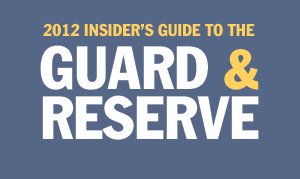
Activation and deployment
REDEPLOYMENT CHECKLIST
As with the activation process, it’s a good idea to make sure your paperwork is in order when you redeploy or return from active duty.
DD FORM 214
Every reservist leaving active duty in support of contingency operations will get a new DD Form 214, a discharge. Review it to make sure awards or decorations for which you are eligible are listed, as well as your correct service dates.
Because this document is critical for awards, time in service, retirement and possible medical benefits, the DD 214 is a service member’s most valuable military document.
EVALUATIONS AND AWARDS
A reservist on active duty for any period will get one or more evaluations or fitness reports and may be eligible for awards. However, many awards are not processed or approved until after deactivation. Documenting where you served on your DD 214 and retaining copies of all orders will serve as good backups.
LEAVE
Most members complete active duty with accrued leave. You can take the leave, be paid for it or carry over any unused amount to the next active-duty period.
The maximum amount of leave that service members may sell back during a career is 60 days, unless a waiver is granted for contingency operations. The 60-day limit currently is waived because of the pace of wartime operations.
MEDICAL
Everyone receives a health assessment upon mobilization and again before leaving active duty. This may be a simple screening or a full examination.
If your Annual Reserve Component Periodic Health Assessment is more than six months old, you must get a physical examination before demobilization.
Report any problem, sickness or injury that occurred during your activation, and make sure it is noted in your medical records.
PAY
Under current procedures, you will remain in the reserve pay system up to partial mobilization. If you are not on direct deposit or Sure Pay, you will be signed up during in-processing.
Personnel mobilized or on extended tours of more than 30 days can choose to be paid monthly or bimonthly. Final pay is deposited in a member’s account at the end of the tour.
RE-EMPLOYMENT
Whether you volunteer for or are ordered to active duty, you are protected from losing your civilian employment. The type and length of your deployment how long you have before you must report back to your civilian job.
Generally, this is within 31 days of your release from active duty for a presidential call-up. In some cases, that period is extended to 90 days.
THRIFT SAVINGS PLAN
Service members on active duty, and Ready Reserve or National Guard members in any pay status, may contribute to the Thrift Savings Plan or change deduction options.
You should carefully consider this option if you are deploying to a hazardous-duty pay area, as significant tax and savings factors can accrue. For more information, visit www.tsp.gov.
YELLOW RIBBON REINTEGRATION PROGRAM
Congress has directed the Defense Department to set up programs to help National Guard and Reserve members and their families before, during and after mobilization, to include helping them reintegrate into their families and communities when they come off of active duty.
This is the Yellow Ribbon Reintegration Program (not to be confused with the Post-9/11 GI Bill Yellow Ribbon Program; see the Education chapter).
In a precedent-setting move, defense officials have defined family members and families in this case to include spouses, children, parents, grandparents, siblings and/or significant others. These family members are eligible for payment of some expenses related to attending support programs, depending on how the reserve components implement them. Covered expenses may include mileage, lodging and/or meals, child care or some combination of these.
Restrictions may apply to the number of family members funded per service member and the types of support provided.
The programs must allow any member from any service component and his family to participate in any scheduled deployment and reintegration program, even if it’s run by another branch of service.
Guard and reserve components have the flexibility to tailor their own programs, but defense officials mandate some basic requirements.
Reintegration programs must be held about 30, 60 and 90 days after return from deployments.